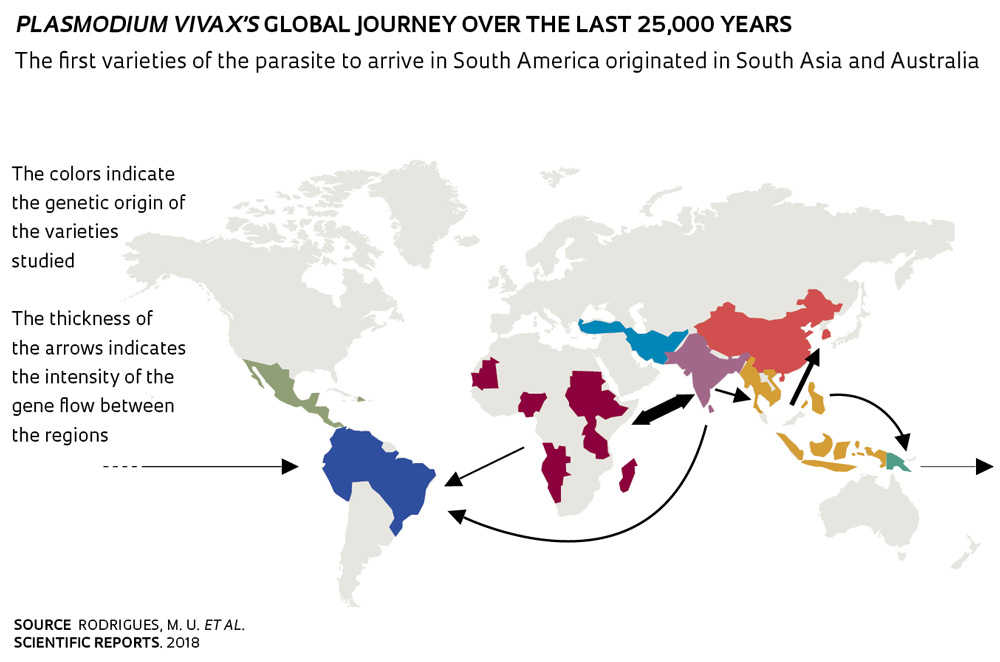Plasmodium vivax, the main parasite that transmits malaria in Brazil and other South American countries, may have arrived on the continent with the first human migrations from South Asia and Australia between 25,000 and 10,000 years ago, according to a study by the Institute of Biomedical Sciences at the University of São Paulo (ICB-USP) (Scientific Reports, January 31). The findings help to explain the genetic diversity of P. vivax in Brazil, which is much higher than in Africa, where P. falciparum, another species that carries malaria, originated. According to parasitologist Marcelo Urbano Ferreira, a professor at ICB-USP and coordinator of the study, P. vivax may have reached the Americas with the very first human arrivals. By comparing the mitochondrial DNA of 244 P. falciparum specimens and 127 P. vivax specimens from countries in South America, Africa, Asia, and Australia, researchers were able to explain the high genetic diversity of P. vivax in Brazil (see Pesquisa FAPESP, issue no. 129) and confirmed that the P. falciparum currently found in South America came directly from the African continent. The research also examined the possible origins of P. simium, which is genetically and morphologically indistinguishable from P. vivax. “Analyses of the mitochondrial genome indicated that P. simium is a form of P. vivax that was likely transferred from humans to monkeys in the Atlantic Forest,” says Ferreira. P. simium later adapted to the monkey and made its way back to humans via mosquito bites (see Pesquisa FAPESP, issue no. 262).
Republish
